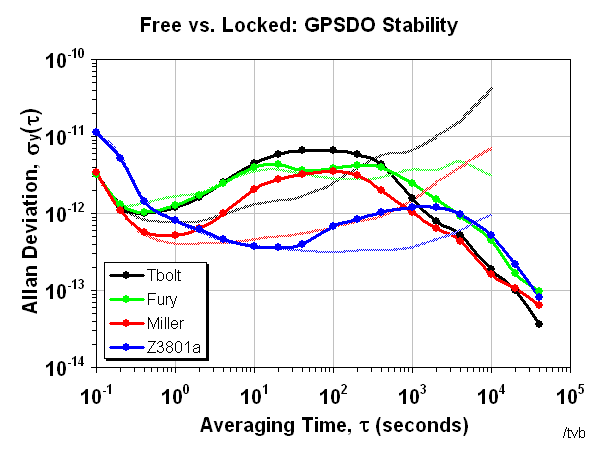The Thunderbolt is a good choice for most amateur users but it isn't at the top of the GPSDO pantheon. If you had to name a "gold standard" among units commonly seen on the surplus market, it would probably be one of the HP Z3801s, tested a few years ago by
Tom at leapsecond.com:

For current-production models I'd say the Jackson Labs low-noise rubidium GPSDO would give the Z3801A a run for its money as the "gold standard," if given a good antenna. Tom's results above are quite a bit better than what I tend to see here, including when I tested the LN Rb, but I've never seen anything outperform the LN Rb. (Disclaimer: I work with JLT but have no involvement with that product.)
The "plutonium standard" would be Ole Petter Ronningen's recent work on
real-time kinematic correction for GPSDOs, which has the potential to blow away everything else by a decisive margin but is extremely complex to set up.
So, um, yeah, Thunderbolts are usually fine. If you want something smaller with similar performance, the Jackson Labs catalog is full of excellent candidates (same disclaimer applies).